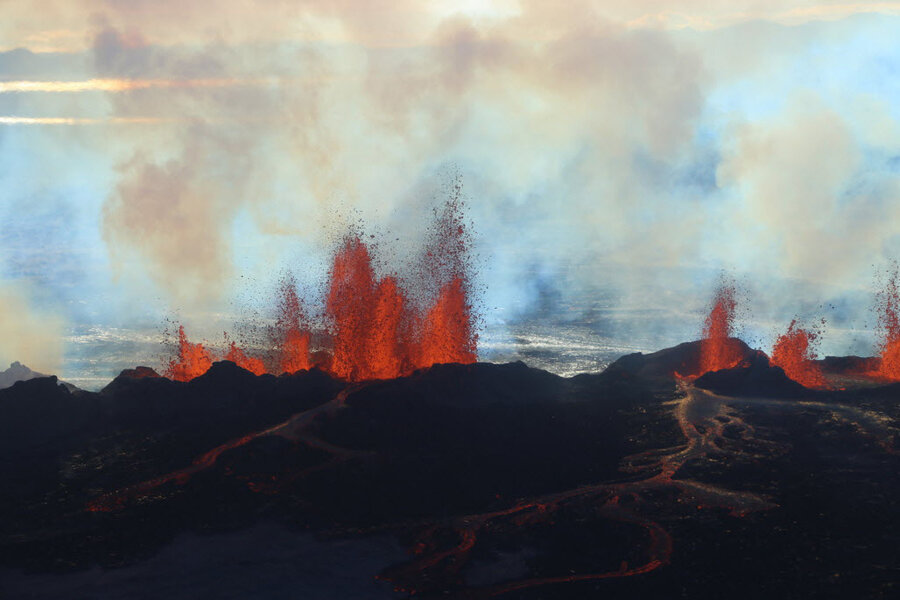Is this volcano in Iceland Europe's worst polluter?
Loading...
Who knew nature could be so dirty?
New research shows last year’s volcanic eruption in Iceland released an unfathomable amount of toxic gas – more than three times as much as all European industry combined.
Using data from satellite sensors to track pollution from the eruption, a team of European scientists found that up to 132,000 tons per day of sulphur dioxide was emitted during the eruption at Bardarbunga volcano. Burning fossil fuels and other industrial processes produce sulphur dioxide as well, which has been linked to respiratory problems and acid rain.
“These results help scientists predict where pollution from future eruptions will spread,” said John Stevenson of the School of GeoSciences at Britain's University of Edinburgh, in a university release.
The eruption lasted half a year and caused a river of lava to flow across northern Iceland. It was the country’s biggest eruption in more than 200 years.
But it lacked ash, so it didn’t interrupt flight paths like the dreaded Eyjafjallajökull volcano did in 2010, causing nearly 100,000 flight cancellations and costing the industry almost $2 billion. But because this eruption produced so much lava, which gives off toxic fumes, air quality was the main victim.
“The eruption discharged lava at a rate of more than 200 cubic [meters] per second, which is equivalent to filling five Olympic-sized swimming pools in a minute. Six months later, when the eruption ended, it had produced enough lava to cover an area the size of Manhattan,” Anja Schmidt of the School of Earth and Environment at the University of Leeds said in the release. “In the beginning, the eruption emitted about eight times more sulphur dioxide per day than is emitted from all man-made sources in Europe per day.”
Researches hope this study will help them understand how eruptions can impact Britain's air quality.
The study was published in the Journal of Geophysical Research and supported by The Natural Environment Research Council and the Royal Society of Edinburgh.





